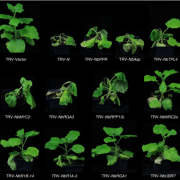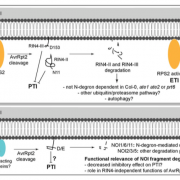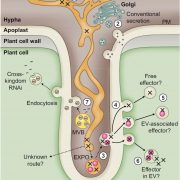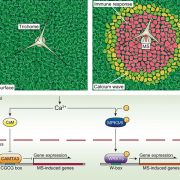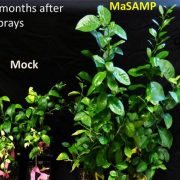Review: Salicylic acid in plant immunity and beyond
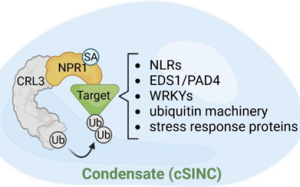 Salicylic acid (SA) is a pivotal natural compound in plant science and finds applications in herbal medicine; specifically, aspirin, the renowned anti-inflammatory drug and pain reliever, is a derivative of SA. As summarized in this review by Spoel and Dong, within plants SA serves as a crucial phytohormone essential for basal immunity and systemic acquired resistance (SAR). Its synthesis initiates in the chloroplast and increases in response to pathogen invasion. The activation of SA-signaling correlates positively with plant immunity, impacting both localized infections and distant tissues. A key molecular target for SA resides within the nonexpresser of PR proteins (NPRs), acting as authentic SA receptors. NPR3 and NPR4 play a pivotal role in spatially regulating NPR1, thereby mediating cell death to restrict infection. Consequently, SA exhibits a dual role: as a signal conferring protection and cell survival, and as a suicidal signal triggering cell death. The review also looks at the regulation of SAR. Although numerous biomolecules have been proposed to facilitate long-distance signaling, clear evidence via feeding experiments remains elusive. A recent preprint suggested that the extent of local reactive oxygen species induction might determine the intensity of SAR in distal tissues, shedding light on a three-decade-old query regarding how local infections lead to de novo SA synthesis in systemic tissues. Furthermore, the structural identification of NPR1 oligomerization, the unique property of NPR1 to form biomolecular condensates, and insights into CULLIN-dependent ubiquitin ligase complex assembly, have unveiled revolutionary insights into the molecular regulation of SA-dependent signaling in plant immunity. (Summary by Ching Chan @ntnuchanlab) Plant Cell 10.1093/plcell/koad329
Salicylic acid (SA) is a pivotal natural compound in plant science and finds applications in herbal medicine; specifically, aspirin, the renowned anti-inflammatory drug and pain reliever, is a derivative of SA. As summarized in this review by Spoel and Dong, within plants SA serves as a crucial phytohormone essential for basal immunity and systemic acquired resistance (SAR). Its synthesis initiates in the chloroplast and increases in response to pathogen invasion. The activation of SA-signaling correlates positively with plant immunity, impacting both localized infections and distant tissues. A key molecular target for SA resides within the nonexpresser of PR proteins (NPRs), acting as authentic SA receptors. NPR3 and NPR4 play a pivotal role in spatially regulating NPR1, thereby mediating cell death to restrict infection. Consequently, SA exhibits a dual role: as a signal conferring protection and cell survival, and as a suicidal signal triggering cell death. The review also looks at the regulation of SAR. Although numerous biomolecules have been proposed to facilitate long-distance signaling, clear evidence via feeding experiments remains elusive. A recent preprint suggested that the extent of local reactive oxygen species induction might determine the intensity of SAR in distal tissues, shedding light on a three-decade-old query regarding how local infections lead to de novo SA synthesis in systemic tissues. Furthermore, the structural identification of NPR1 oligomerization, the unique property of NPR1 to form biomolecular condensates, and insights into CULLIN-dependent ubiquitin ligase complex assembly, have unveiled revolutionary insights into the molecular regulation of SA-dependent signaling in plant immunity. (Summary by Ching Chan @ntnuchanlab) Plant Cell 10.1093/plcell/koad329



